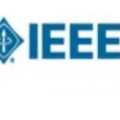Minerals are indispensable for a functioning modern society. Yet, their supply is limited causing a need for optimizing their exploration and extraction both from ores and recyclable materials. Typically, these processes must be meticulously adapted to the precise properties of the processed particles, requiring an extensive characterization of their shapes, appearances as well as the overall material composition. Current approaches perform this analysis based on bulk segmentation and characterization of particles, and rely on rudimentary postprocessing techniques to separate touching particles. However, due to their inability to reliably perform this separation as well as the need to retrain or reconfigure most methods for each new image, these approaches leave untapped potential to be leveraged. Here, we propose an instance segmentation method that is able to extract individual particles from large micro CT images taken from mineral samples embedded in an epoxy matrix. Our approach is based on the powerful nnU-Net framework, introduces a particle size normalization, makes use of a border-core representation to enable instance segmentation and is trained with a large dataset containing particles of numerous different materials and minerals. We demonstrate that our approach can be applied out-of-the box to a large variety of particle types, including materials and appearances that have not been part of the training set. Thus, no further manual annotations and retraining are required when applying the method to new mineral samples, enabling substantially higher scalability of experiments than existing methods. Our code and dataset are made publicly available.
翻译:然而,矿物供应有限,导致需要优化勘探和从矿石和可回收材料中提取的矿物。一般而言,这些工艺必须精确地适应加工的粒子的精确特性,要求对其形状、外观和总体材料构成进行广泛的定性。目前的方法基于散装分解和粒子定性进行这种分析,并依靠基本的后处理技术来分离触摸粒子。然而,由于它们无法可靠地进行这种分解,以及需要为每幅新图像重新培训或重新配置大部分方法,这些方法使尚未开发的潜力得以发挥。在这里,我们建议了一种实例分解方法,能够从一个环氧基矩阵中嵌入的矿物样品中提取单个微CT图像。我们的方法以强大的NNU-Net框架为基础,引入粒子大小的正常化,利用边界核心代表来进行分解,并经过一个包含众多不同材料和矿物的粒子的大型数据集。我们的方法可以在外应用。我们的方法可以将尚未开发的潜力加以利用。在这里,我们提出的一个实例分解方法能够从大型微粒子样本中提取个别的粒子。我们所需要的样本的样本是更精确的。



